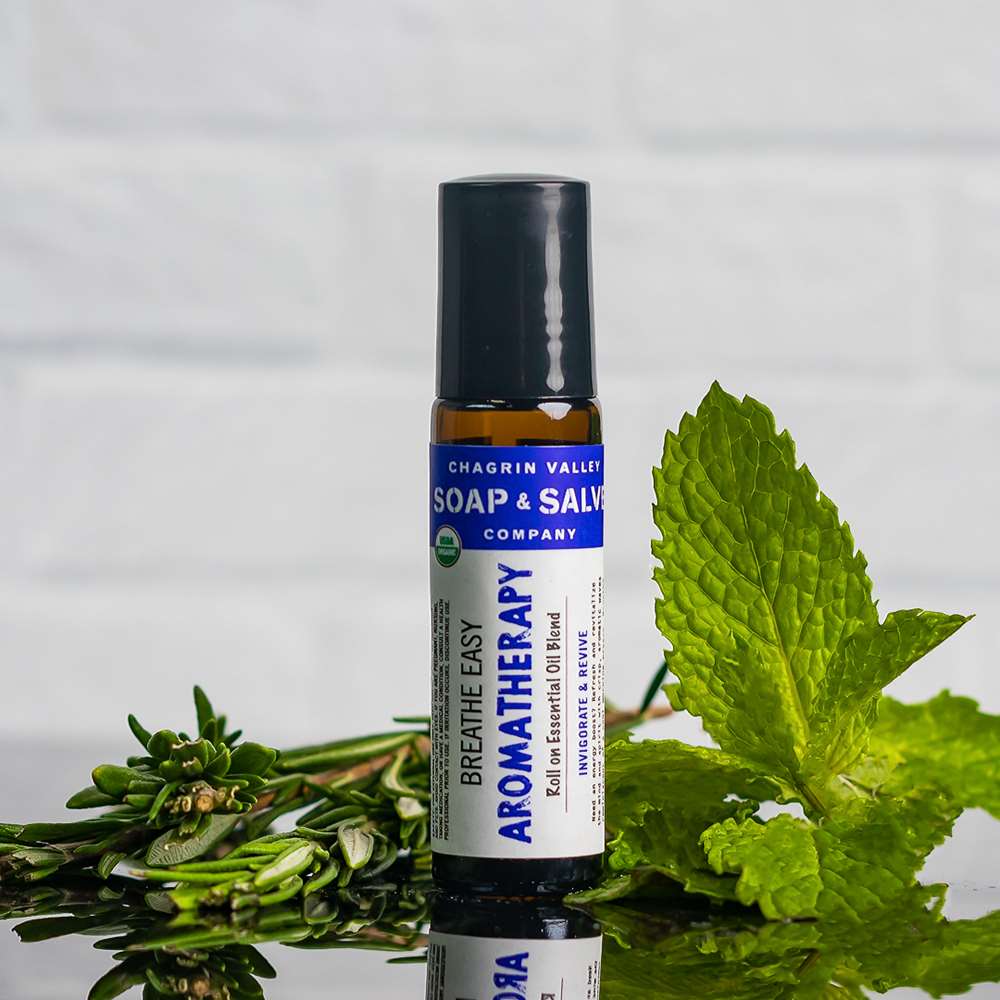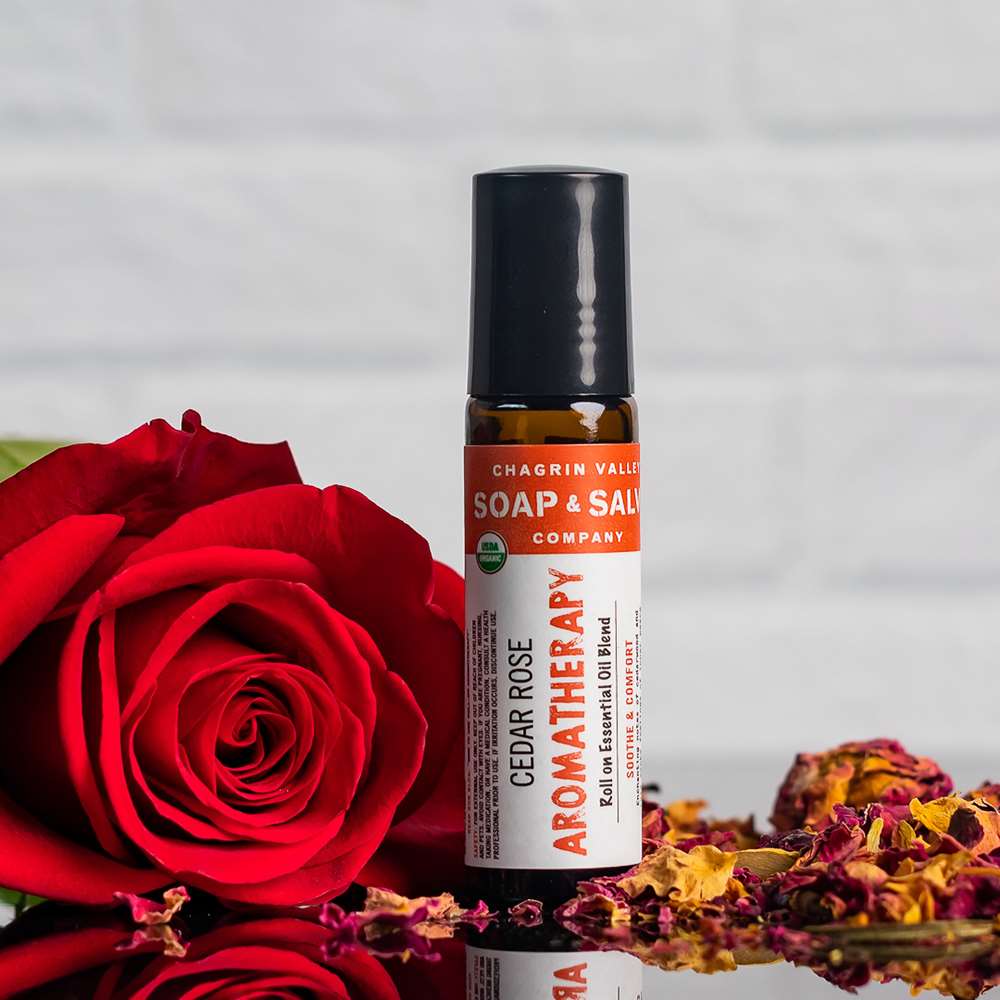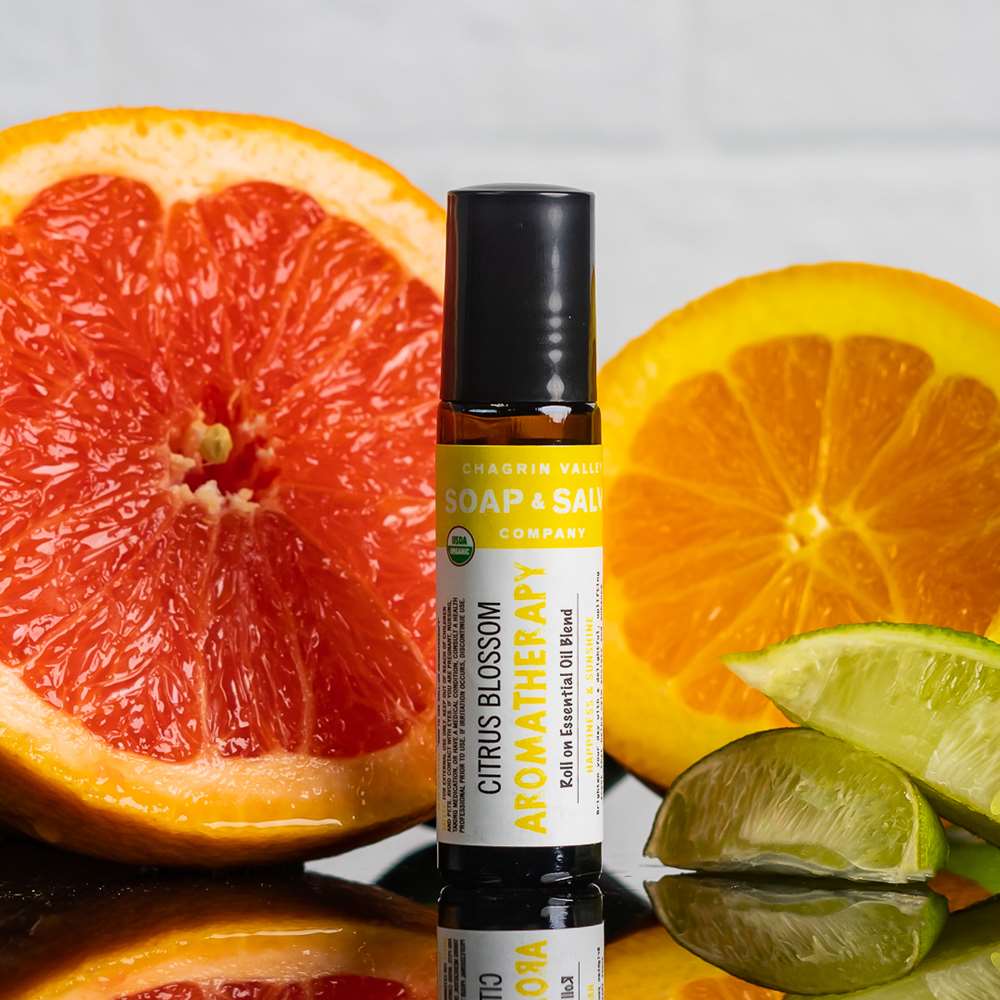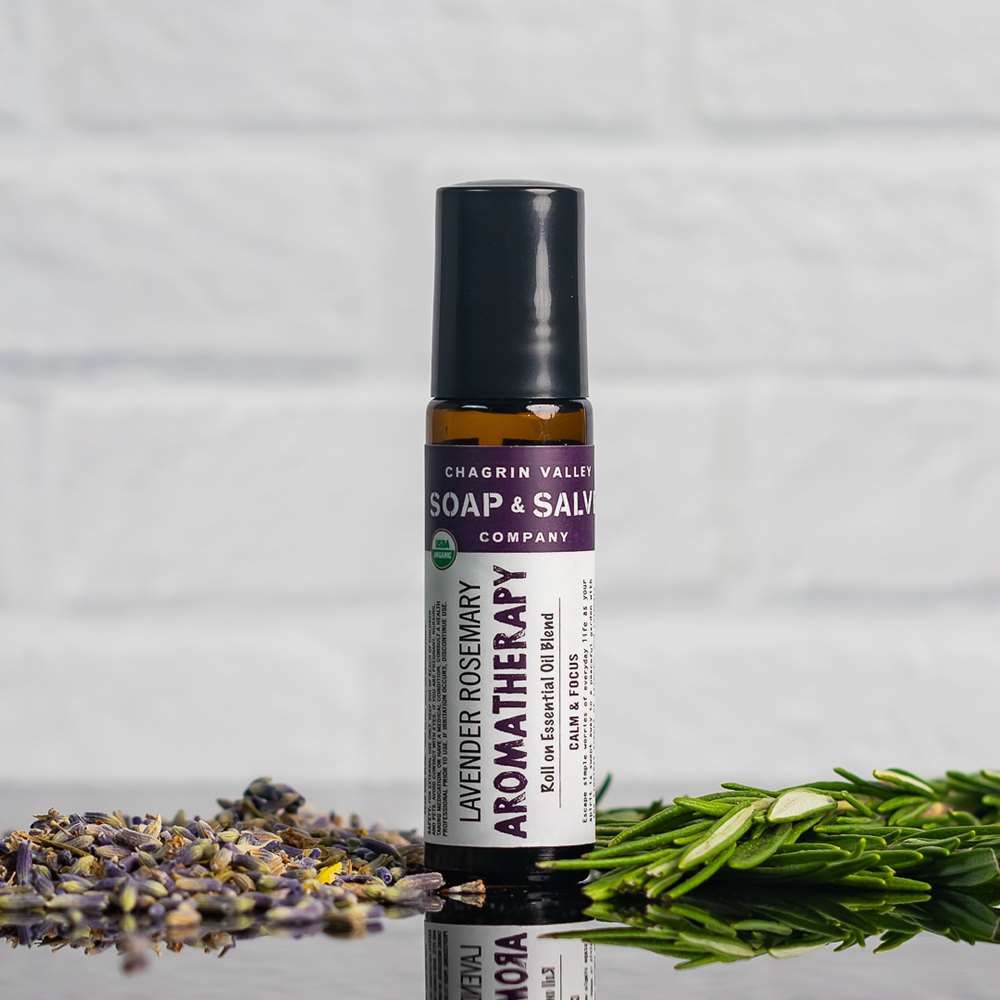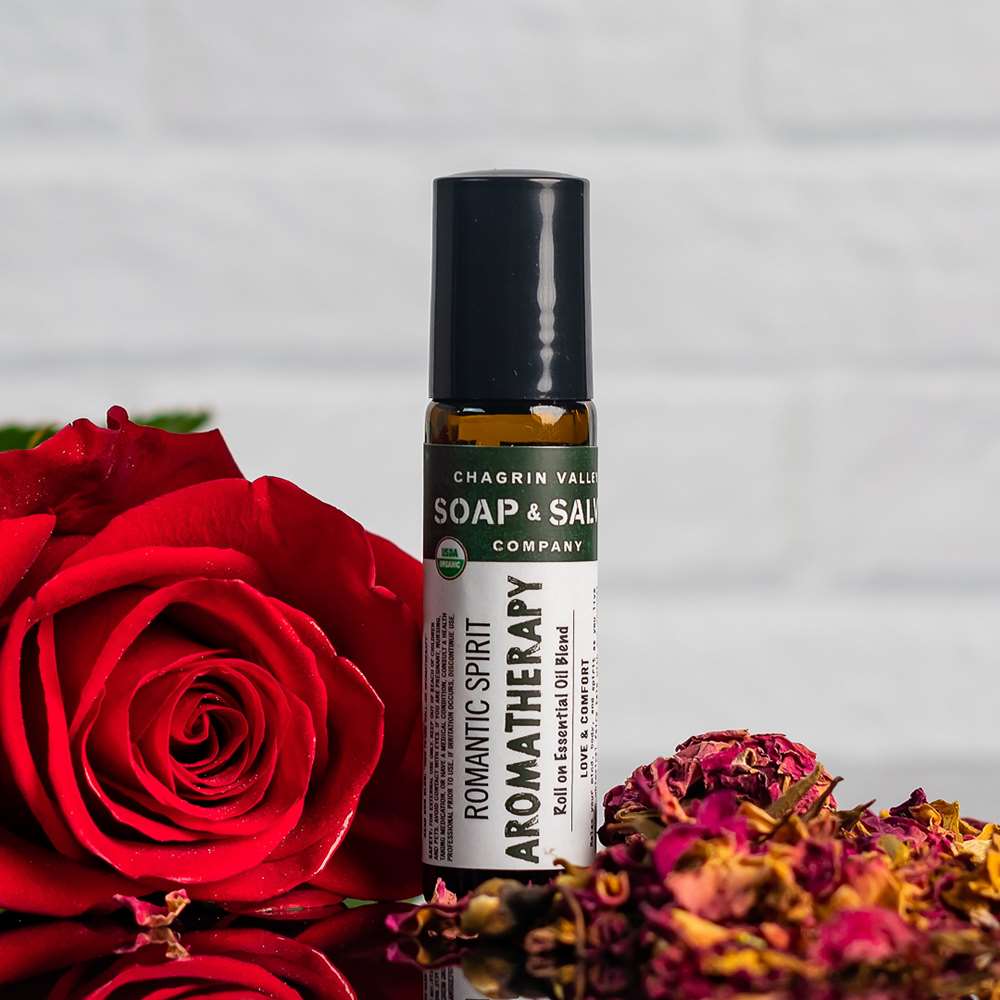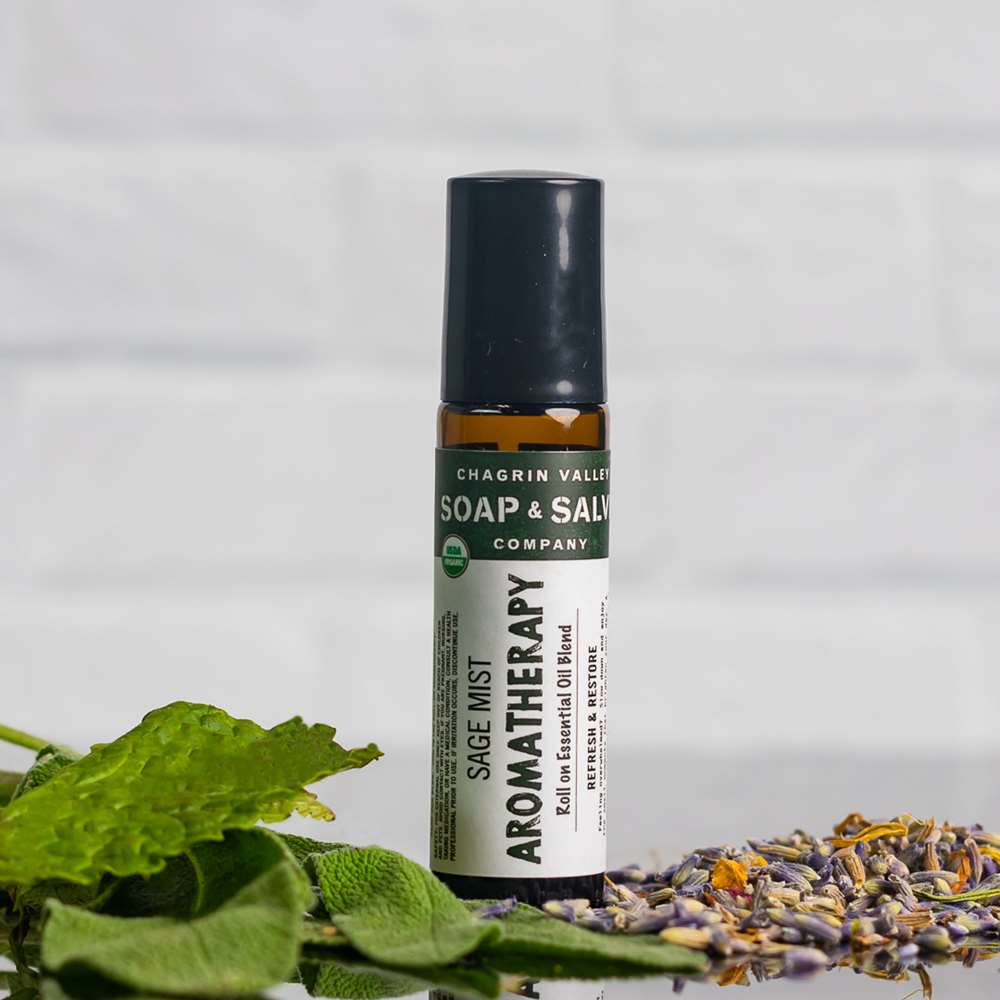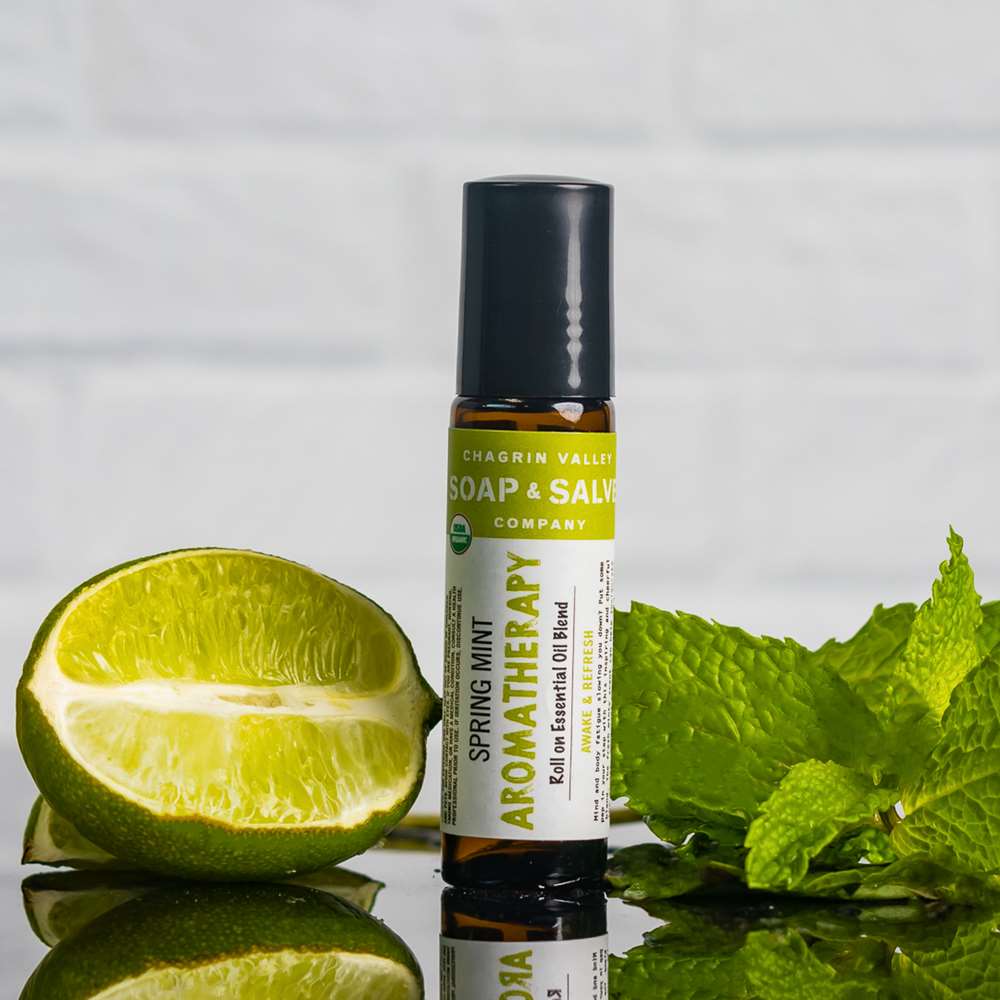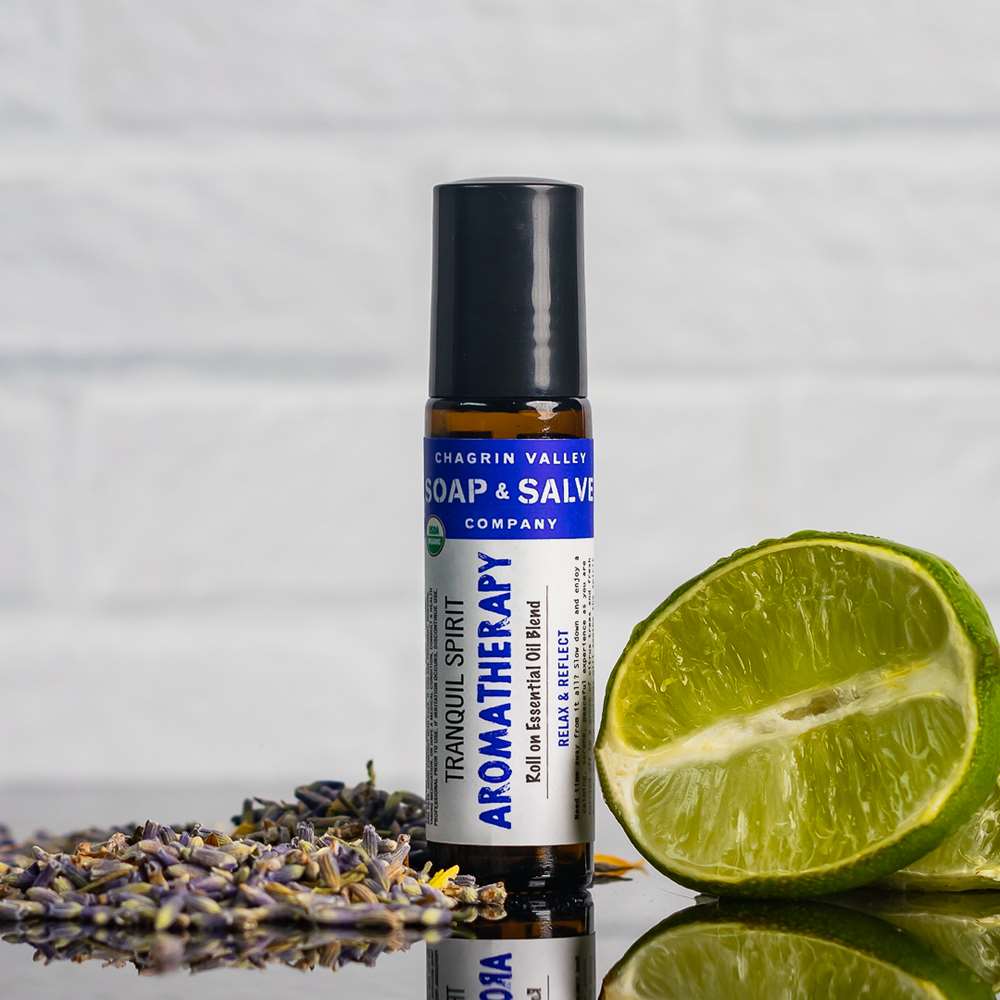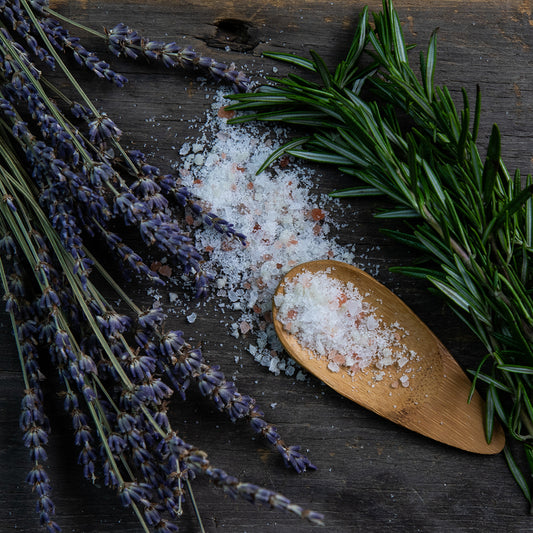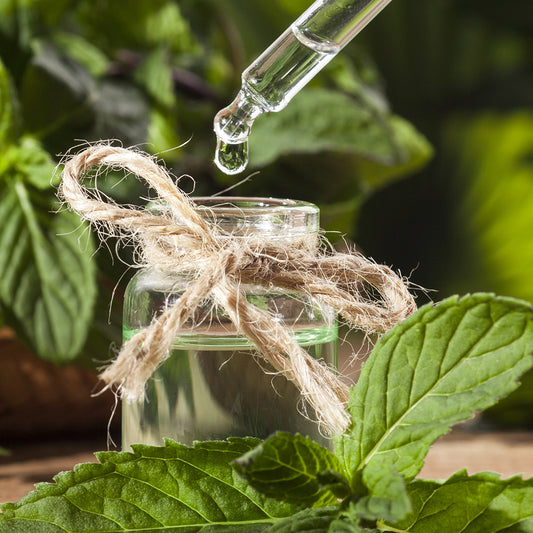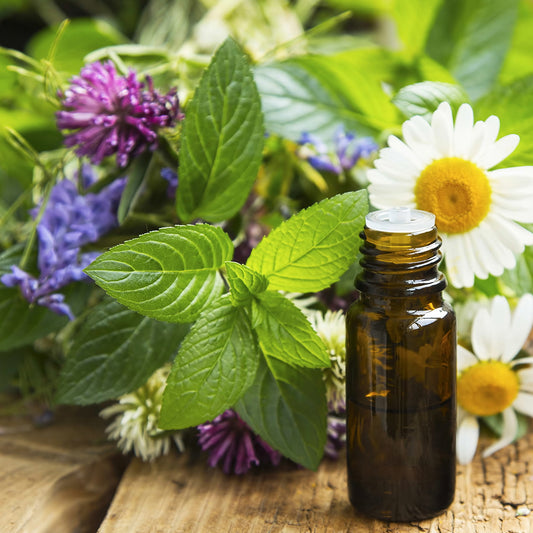How To Use Roll-On Aromatherapy
 Aromatherapy, the practice of using essential oils for therapeutic benefit, has been a part of human civilizations for centuries. The topical application of essential oils is a very effective way to experience aromatherapy and its unique advantages.
Aromatherapy, the practice of using essential oils for therapeutic benefit, has been a part of human civilizations for centuries. The topical application of essential oils is a very effective way to experience aromatherapy and its unique advantages.
Essential oil roll-ons are our favorite way to apply oils. Convenient and perfect for on-the-go aromatherapy, all you have to do is apply the rollerball to your skin to experience the age-old practice of aromatherapy anytime, anyplace. These portable roll-ons are easy to carry with you or hide away in your nightstand or desk.
Our organic Aromatherapy Essential Oil Roll-Ons are diluted at a safe percentage for adults with a moisturizing combination of Organic Jojoba and Sunflower Oils.
Although the purpose of this article is to discuss "How to Use Roll-on Essential Oils," this information is also appropriate for any essential oil or blend that is skin-safe and properly diluted in a carrier oil.
How do you decide where to apply your aromatherapy roll-on?
To make the best choice, you must first decide the purpose of this “aromatherapy” experience.
What is the goal? What are you using the essential oils for?
Do you have a headache? Are you stressed? Are you fatigued?
Or do you simply want to enjoy an enchanting scent?
Aromatherapy Roll-Ons as a “Perfume”
Essential oils are naturally very fragrant which makes them ideal for use as a perfume.
I love using the natural scents of essential oils as a body scent. I can enjoy their lovely fragrances as well as experience some therapeutic benefits.
 If I am using a roll-on as a “perfume” simply because I love the aroma, I like to dab it behind my earlobes, on my forearms, and on the pulse points of my wrists and neck.
If I am using a roll-on as a “perfume” simply because I love the aroma, I like to dab it behind my earlobes, on my forearms, and on the pulse points of my wrists and neck.
Another lovely place is behind the top of your ears. Since this spot is at the hairline, the skin is oilier than at the base of the ear. The skin oils help hold the perfume a bit longer.
I like to place the essential oils where my nose can continue to get a hint of the scent for a while.
There is a belief that pulse points enhance the scent of perfume because they are places where the body generates extra heat due to the warm pumping arterial blood vessels located there.
Although it is true that the scent of a “perfume” is accentuated by the warmth of the skin, there is no evidence to support the claim that pulse points are actually warmer. Nonetheless, these are still nice areas to apply a fragrance. (More about “pulse points” later!)
Another nice touch is to add a few dabs to your comb or hairbrush. I like this method because the scent is not overpowering, and I get a subtle hint of fragrance throughout the day as my hair moves.
Be aware that essential oil “perfumes” made without synthetic fragrance oils or fixatives do not have long-lasting power. It often depends on the types of essential oils used in the blend.
Essential oils are quite volatile. The word volatile comes from the Latin word "volare" which means "to fly," since they quickly evaporate into the air even at room temperature.
Have you ever used an essential blend on your skin and noticed that it has a different scent after a while? That's because each of the essential oils in the blend evaporates at a different rate.

Fragrances whether they are essential oil blends or expensive perfumes are built on three layers known as the Fragrance Pyramid.
The pyramid is based on the note of an oil. The “note” of an essential oil is determined by how quickly the scent of the oil fades (evaporates) after being openly exposed to air.
The light, fresh Top Note is the first scent that you smell immediately after applying the blend. These are the most volatile oils and the first to evaporate.
The scents of Middle Note (or heart note) oils appear after the top notes have begun to wear off. It may take a couple of minutes for your nose to recognize these softer, warmer notes. This layer, which evaporates next is often the true scent or heart of the fragrance.
Base Note oils are usually heavy, intense, rich oils (think patchouli) that take the longest time to evaporate! These oils often help bind all three notes together.
As a result, to enjoy a long-lasting scent of an essential oil blend you will need to apply them more often. Our little portable roll-on makes that quite easy.
Roll-Ons for Aromatherapy
Before reading this information I would like to point you to our blog “What is Aromatherapy” especially the sections near the bottom entitled "Safety" and “Research.”
There I explore questions like Safety, Can Essential Oils Be Absorbed Through the Skin? and Are the Effects of Aromatherapy Real or Placebo?
There is some research and a lot of anecdotal evidence that has shown the positive benefits of aromatherapy, such as relief from anxiety, improved sleep, and improved quality of life, especially for people with dementia and some chronic health conditions. But there is still so much to learn.
A few words of caution!
 Avoid putting essential oils near sensitive areas like your eyes, nose, or mouth.
Avoid putting essential oils near sensitive areas like your eyes, nose, or mouth.
Also, some essential oils can cause photosensitivity. Essential oils such as bergamot, grapefruit, or other citrus oils can make your skin more susceptible to irritation from UV rays of the sun depending on certain conditions. If you have applied these essential oils to exposed skin areas and are unsure of the dilution, avoid spending too much time in the sun and stay out of the tanning booth.
Read our Blog "Photosensitivity and Citrus Essential Oils"
If you have sensitive skin please do a patch test before using a new product on your skin. Be cautious of your most sensitive skin areas and of course if you are pregnant or nursing, it is always best to speak to a health care provider before using essential oils.
Where to Apply Essential Oils
To get the most benefit from your essential oils, you will find that certain application areas are more effective than others.
Keep in mind that essential oils are pretty potent. More is not always better and little goes a long way! Start small and then increase the dosage as necessary.
Deciding where to apply the oil depends on the goal. Again, what are you using the essential oils for? Remember that an aromatherapy roll-on can provide both topical and inhalation benefits.
In this blog, I will discuss some of the common areas for applying essential oils as well as share some of my own anecdotal experience.
Pulse Points
One of the best ways to experience the therapeutic power of essential oils is by applying them to pulse points. (This has nothing to do with the warmth myth that I mentioned above.)
 When your heart pumps, your body’s arteries expand and contract. That is your pulse.
When your heart pumps, your body’s arteries expand and contract. That is your pulse.
Your arteries are pulsing everywhere, but a pulse point is a location on your body where you can feel the pulse because the pumping arterial blood vessels are running close to the surface of the skin.
The farther away from the heart, the fainter the pulse. So don't be surprised if you cannot feel many of them right away. It can take some practice.
There are several main pulse points you can try:
- Temples: the temporal artery
- Side of the neck: the carotid artery
- Insides of Wrists: the radial artery
- Inner Elbow: the brachial artery
- Back of the knees: the popliteal artery
- Top of the feet: the dorsalis pedis artery
- Insides of Ankles: the posterior tibial artery
Although some areas are much more common to use than others, each unique person may discover a preference for one or more of these pulse points or one of the other spots I will mention later.
Do you need to relax, revitalize or ease a tension headache? Try to find your own personal sweet spots that meet your needs. Do a little experiment. Apply aromatherapy essential oils to different areas (not at the same time) and make a note of when you experience the desired feelings.
 When I experimented with essential oils for my restless legs I discovered that the nape of my neck and the pulse points inside the ankles (see picture) work better for me than a leg massage. Picture from autoprac.com/pulse
When I experimented with essential oils for my restless legs I discovered that the nape of my neck and the pulse points inside the ankles (see picture) work better for me than a leg massage. Picture from autoprac.com/pulse
There are many areas on the body on which essential oils can be applied, some are true pulse points and others are not.
But I believe that to really maximize the benefit of these oils you want to experience the benefits from both inhalation and topical application.
For example, to ease emotional and sleep-related issues, essential oils often work best when inhaled.
So roll your essential oils on points, especially around the head, where they can be readily inhaled.
Although you can apply essential oils to most parts of your body, the oils can have different effects depending on where they are applied. So let’s explore some places.
The Wrist
The inside of your wrist is a very common location to apply roll-on essential oils. Since the radial artery runs along the inside of the wrist, the inner wrist below the thumb is one of the pulse points on our body.
If you think about it, this is also the place where most people would naturally apply fragrance.
 I mention the wrist first because it is actually my favorite spot.
I mention the wrist first because it is actually my favorite spot.
I glide on my aromatherapy roller, bring my wrists up to my nose, close my eyes, inhale deeply, and take a moment to focus my attention on the scent.
During the day, I can easily bring my wrists to my nose whenever I want to inhale and refocus my attention on the aroma.
Since they are so easy to carry around I always have one or two aromatherapy roll-ons nearby to apply during the day when I need to relax, energize, or focus.
The Head
Essential oils can be applied to many places on your head depending on the desired outcome. For example, the crown of your head, across your forehead, and over the sinuses. Focus on localized areas where head tension is felt.
When working with essential oils around the face be careful to avoid your eyes!
As I stated above, areas on the head often allow you to experience the benefits from both inhalation and topical application.
Here are a few more:
Behind the Ears: Although not a true pulse point, the skin behind your ears is thin when compared to other parts of your body, making it more absorbent or permeable than other areas. This space is actually located at the back of the jawbone, just below the ear. When my head is stuffy I like to apply a blend, like our Breathe Easy, to that little notch and then use my index finger to gently massage downward toward the neck.
 The Temples: The temples are the soft spots located on the sides of your forehead. The pulse point in your temples comes from the superficial temporal artery (the red lines in the pictured) which is a branch of the external carotid artery. Notice how the artery passes in front of your ear and then above to the temple area.
The Temples: The temples are the soft spots located on the sides of your forehead. The pulse point in your temples comes from the superficial temporal artery (the red lines in the pictured) which is a branch of the external carotid artery. Notice how the artery passes in front of your ear and then above to the temple area.
The temple region is the area most people turn to for headache and migraine relief. This is a great spot on which to dab your roll-on essential oils any time of day. It can be especially helpful at night using a relaxation blend.
When I have a headache I often apply aromatherapy blends with peppermint, eucalyptus or lavender to this area. Keep in mind that a little goes a long way, so start out small!
Drawing from: Prof. Bhupendra C. K. Patel MD, FRCS.
The Nose: To ease symptoms of respiratory ailments, it is best to inhale the oil directly by applying the roll-on underneath your nose.
Applying oils to pulse points on or near the face, such as the neck and temples, as well as the upper chest may also help.
On either side of the nostrils, there are pressure points that can help relieve tension in the head and neck.
I often have sinus problems. When I experience sinus pain and pressure, my sinuses enjoy a little stimulation in the form of a gentle massage with essential oils. Below I share my methods for sinus massage. If you have something that works for you, please feel free to share in the comments below.
 My maxillary sinuses are usually my major issue. These sinuses are the largest and they are located on both sides of the nose and just below the cheeks. I glide the roll-on along the groove under my cheekbone and then use the knuckle of my index finger (it just fits so nicely in that groove) and repeatedly gently massage downward toward my lower jaw.
My maxillary sinuses are usually my major issue. These sinuses are the largest and they are located on both sides of the nose and just below the cheeks. I glide the roll-on along the groove under my cheekbone and then use the knuckle of my index finger (it just fits so nicely in that groove) and repeatedly gently massage downward toward my lower jaw.
The frontal sinuses, located in the center of the forehead and right above each eye, are where I feel the "headache." Here I glide the aromatherapy roller across my forehead above my eyebrows. Then I take both of my index fingers, place them toward the middle of my forehead, and slowly and gently massage outward in a circular motion, toward the temples.
That throbbing pain and pressure around the eyeball that comes with sinus pressure is often felt the most in the sphenoid and ethmoid sinuses. The sphenoid sinuses are located behind your nose and right between your eyes, and the ethmoid sinuses are found in the spongy bone in the upper part of the nose between the eyes.
If you want to use essential oils here you MUST be very careful not to get them in your eyes. To massage this area, glide a very small amount of essential oil onto the tips of each index finger and place them on the sides of the bridge of the nose bridge. Massage the area using gentle but firm pressure in a tiny circular motion and then move slowly down the sides of the nose. This can also be done with plain oil if the essential oils bother your eyes.
As an aside, I often do these sinus massages in the shower. I spray our Breathe Easy Shower Mist into the steamy shower (remember that shower mists are not meant for topical use!). Then I wet my face with water, and massage away with my wet fingers!
The Neck
 The neck is a wonderful location to help with inhalation since it is close to the nose. Some who find essential oils too strong for their facial area often enjoy the more subtle aroma that wafts from the neck.
The neck is a wonderful location to help with inhalation since it is close to the nose. Some who find essential oils too strong for their facial area often enjoy the more subtle aroma that wafts from the neck.
1. Carotid Pulse Point: Located on either side of your neck next to the trachea (windpipe) are the pulse points for the major artery to the head, the carotid, an effective area to apply oils. (see picture)
2. Nape of the Neck: This is the spot on the neck where the back of your hair begins at the base of the skull. I like to use our Breathe Easy roll-on here along with a gentle massage to help ease neck muscle tension.
3. Suprasternal Notch: This is the notch at the base of your throat where your collar bone meets your sternum. It is the soft spot between your collar bones.
The Chest
Do you need to ease symptoms of a cold or congestion? Applying your roll-on essential oils to your chest can work wonders. Essential oils such as eucalyptus, tea tree, spearmint, and peppermint have a cooling, menthol scent that can help ease congestion and clear your airways which can allow you to breathe easier.
The Feet
Soles of the Feet: While there is much debate over the benefits of applying essential oils to the bottom of your feet, there is a lot of anecdotal evidence from people who swear by it.
A relaxing foot massage can certainly help to reduce stress and anxiety. So feet are a great place to apply essential oils especially when you are ready to put your feet up and relax. While there are some who claim that essential oils absorb more quickly into your feet, there is a lack of scientific evidence to suggest that the feet absorb essential oils faster than other parts of the body.
The Inside of the Ankles: This pulse point for the posterior tibial artery is one of my go-to spots when struggling with restless leg syndrome. Usually, within 15 minutes after applying the oil, I feel some relief from the twitching.
Other Spots
When it comes to easing pain or inflammation roll-ons can be applied directly to the problematic area. For example, I will often use our Spring Mint roll-on on my arthritic thumb joint where it helps ease the joint pain as well as provide a refreshing and uplifting scent. I have also used the roll-on on my old degenerative cervical spine which sometimes helps ease pain.
There are many other areas on the body you can try. As I said above, take some time to find your personal sweet spots to help lift your spirits, relax your mind, or ease congestion or motion sickness.
Reflexology and Acupressure
 Reflexology is a great way to use essential oils. Reflexology involves finger pressure and manipulation of specific reflex areas of the feet, hands, and ears that correspond to the other parts of the body. Reflexology works with the body’s energy flow to promote relaxation, stress relief, and balance within the body.
Reflexology is a great way to use essential oils. Reflexology involves finger pressure and manipulation of specific reflex areas of the feet, hands, and ears that correspond to the other parts of the body. Reflexology works with the body’s energy flow to promote relaxation, stress relief, and balance within the body.
Like acupuncture, acupressure has been used for centuries to treat many medical conditions. For example, pain can be reduced by applying gentle pressure to the trigger and motor points, which can help tight muscles and knots to relax. The combination of essential oils with acupressure can bring relief from fatigue, tension, and overall stress.
Complete books have been written on the use of essential oils with both Acupressure and Reflexology. Although there is a lot of information available on the internet, use that as a starting point and then find a knowledgeable practitioner who can help you choose the combination of oils and techniques that will work best for you, your condition, and your goals for treatment.
In Conclusion
The topical application of essential oils is a very effective way to experience aromatherapy and its unique advantages.
 Whether you want to boost your mood, calm your spirit or simply enjoy a beautiful scent, our portable little roll-ons are perfect to take with you for aromatherapy on the go.
Whether you want to boost your mood, calm your spirit or simply enjoy a beautiful scent, our portable little roll-ons are perfect to take with you for aromatherapy on the go.
We have been making essential oil blends for our own personal use for about 4 years and now we have decided to share some of them with you!
After almost a year of testing variations of each Aromatherapy formulation on friends, family, and customers with a variety of skin types and sensitivities we chose a dilution of 4.5%. Although our sample was small, our test subjects enjoyed the strength of the aromas and experienced no skin irritations or sensitivities.
In this blog, I have discussed some of the common areas for applying essential oils and shared some of my own anecdotal experiences.
Deciding where to apply the oil depends on the goal of your aromatherapy experience. I hope this information will help as you explore your own personal application sweet spots that meet your needs.
If you have used an aromatherapy roll-on, please share your favorite methods. Our customers enjoy learning from each other!

Photosensitivity and Citrus Essential Oils
Why We Use Only Real Plant Essential Oils?
How Essential Oils Are Extracted
How to Diffuse Essential Oils for Personal Use
How To Do A Simple Allergy Patch Test
The information above pertains to healthy adults. We do not provide information on the safety of essential oils during pregnancy or for use in Children because the available information is often contradictory. If you are interested in using essential oils during pregnancy or with young children please do your own research and be sure to consult your doctor, midwife, or health care professional before use.
The statements regarding health-related benefits of essential oils have not been evaluated by the Food and Drug Administration and are in no way intended and should not be construed as medical advice to diagnose, treat, cure, or prevent any disease or health condition.
